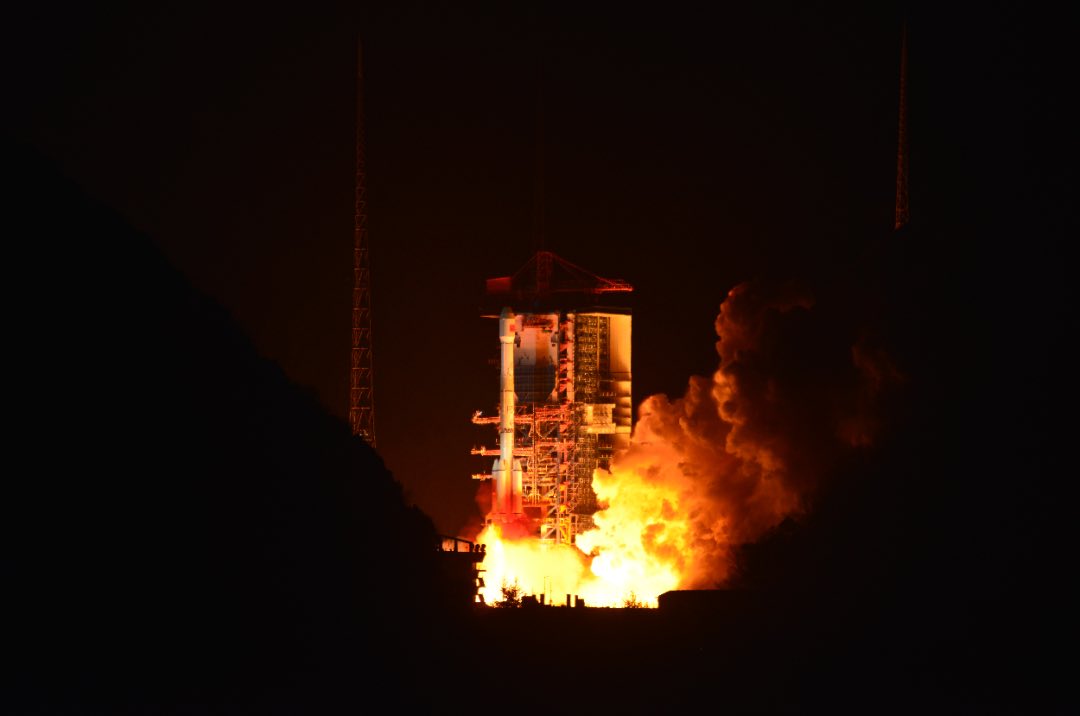
A mysterious Chinese government satellite, believed to be a military-operated early warning station, successfully launched into orbit Feb. 4 on top of a Long March 3B rocket.
The three-stage, 184-foot-tall (55-meter) rocket lifted off from the Xichang space center at 1536 GMT (10:36 a.m. EST), according to the China Aerospace Science and Technology Corp., or CASC, China’s biggest state-owned aerospace contractor.
The Long March 3B pitched away from Xichang, located in Sichuan province in southwestern China, on an easterly trajectory to head for an elliptical geostationary transfer orbit.
Liftoff occurred at 11:36 p.m. Beijing time.
After dropping its four hydrazine-fueled boosters, first stage, and second stage, the Long March 3B’s twin-engine cryogenic upper stage ignited two times to inject the rocket’s payload into the proper orbit for deployment. Chinese government officials said the mission achieved its “predetermined orbit” and was a “complete success.”
U.S. military tracking data indicated the payload separated from the Long March 3B rocket in an elliptical, or egg-shaped, orbit ranging between 120 miles (194 kilometers) and 22,251 miles (35,811 kilometers) in altitude, with an inclination of 28.5 degrees to the equator.
The spacecraft is expected to use an on-board propulsion system to reach a circular orbit more than 22,000 miles over the equator, where its orbital velocity will match Earth’s rotation, giving the satellite a fixed coverage area.
According to CASC, the new spacecraft — named TJS 6 — is a communication technology test satellite. The TJS 6 spacecraft will be “mainly used for satellite communications, radio and television, data transmission, and other services,” CASC said, along with conducting related technology verification tests.
But independent analysts believe the TJS 6 satellite has a military purpose, and could carry sensors designed to warn Chinese leaders of an impending missile attack. Low-resolution illustrations of the TJS 6 satellite show payloads that are similar to infrared instruments on-board U.S. military early warning satellites.
China has launched six satellites in the TJS series since 2015, and all are widely speculated to have military missions. The TJS 2, TJS 5, and TJS 6 satellites appear to be of the same type, likely with missile warning sensors.
The TJS 1 and TJS 4 satellites are theorized to have an electronic or signals intelligence-gathering mission.
Email the author.
Follow Stephen Clark on Twitter: @StephenClark1.



